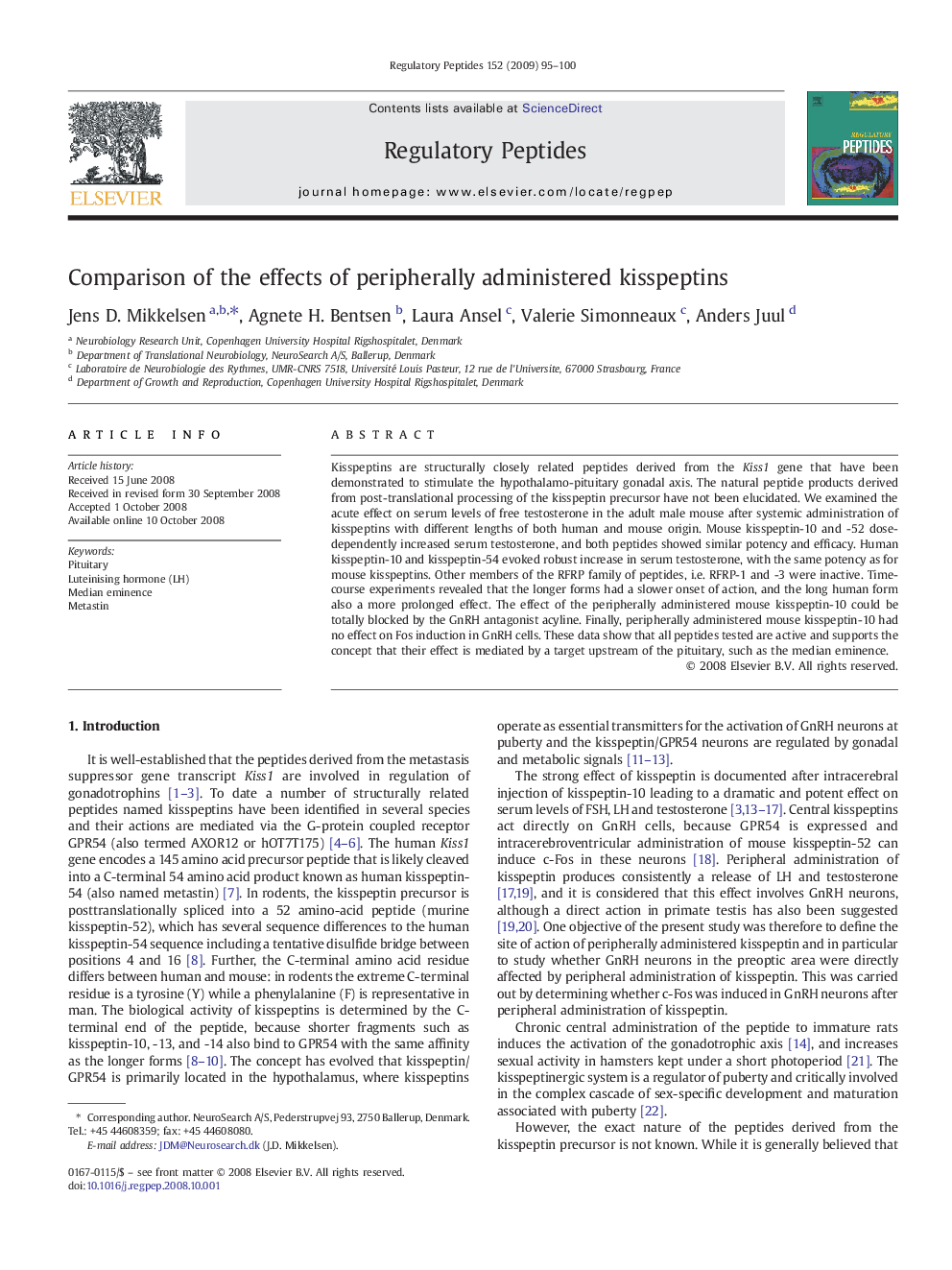| Article ID | Journal | Published Year | Pages | File Type |
|---|---|---|---|---|
| 2023076 | Regulatory Peptides | 2009 | 6 Pages |
Kisspeptins are structurally closely related peptides derived from the Kiss1 gene that have been demonstrated to stimulate the hypothalamo-pituitary gonadal axis. The natural peptide products derived from post-translational processing of the kisspeptin precursor have not been elucidated. We examined the acute effect on serum levels of free testosterone in the adult male mouse after systemic administration of kisspeptins with different lengths of both human and mouse origin. Mouse kisspeptin-10 and -52 dose-dependently increased serum testosterone, and both peptides showed similar potency and efficacy. Human kisspeptin-10 and kisspeptin-54 evoked robust increase in serum testosterone, with the same potency as for mouse kisspeptins. Other members of the RFRP family of peptides, i.e. RFRP-1 and -3 were inactive. Time-course experiments revealed that the longer forms had a slower onset of action, and the long human form also a more prolonged effect. The effect of the peripherally administered mouse kisspeptin-10 could be totally blocked by the GnRH antagonist acyline. Finally, peripherally administered mouse kisspeptin-10 had no effect on Fos induction in GnRH cells. These data show that all peptides tested are active and supports the concept that their effect is mediated by a target upstream of the pituitary, such as the median eminence.
